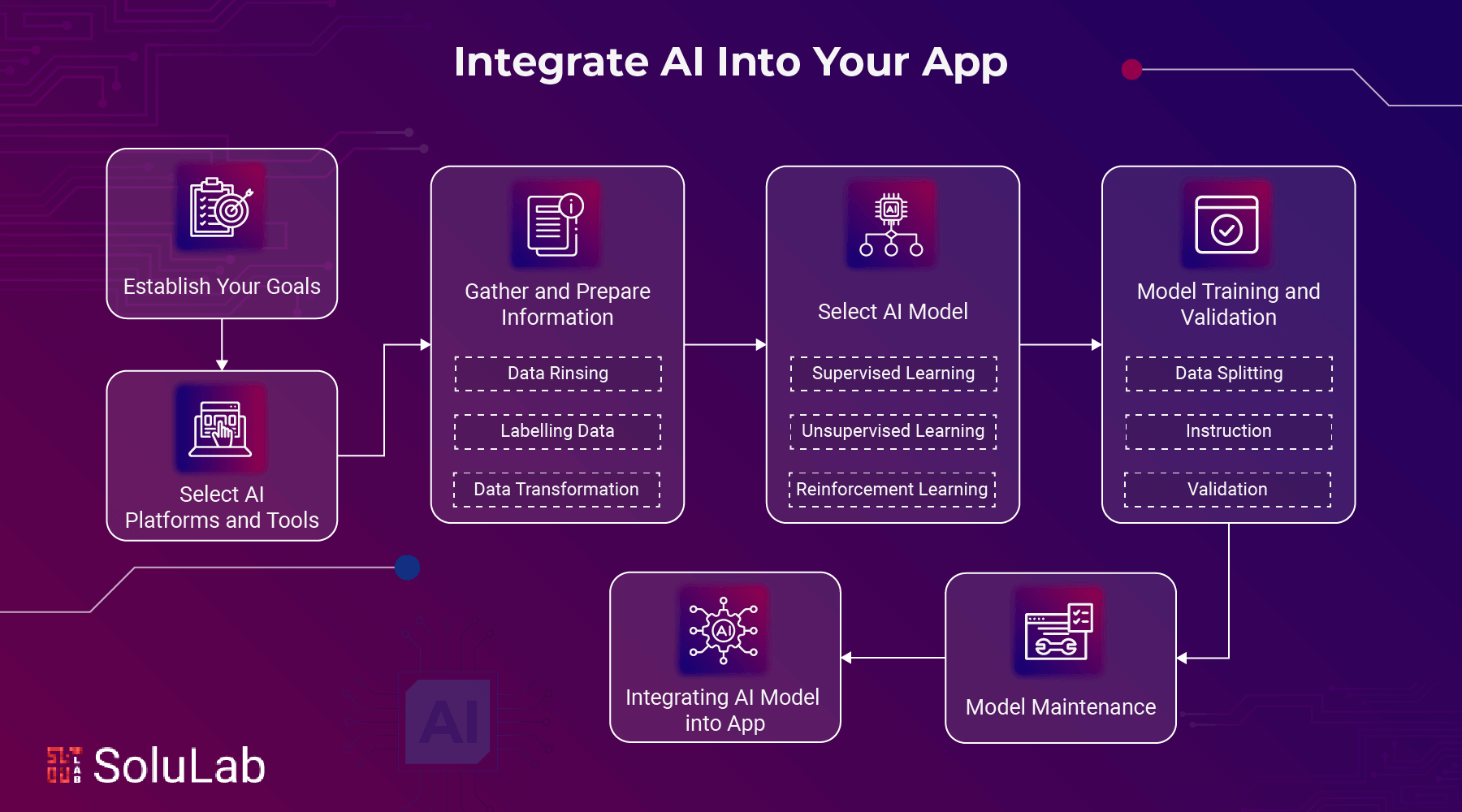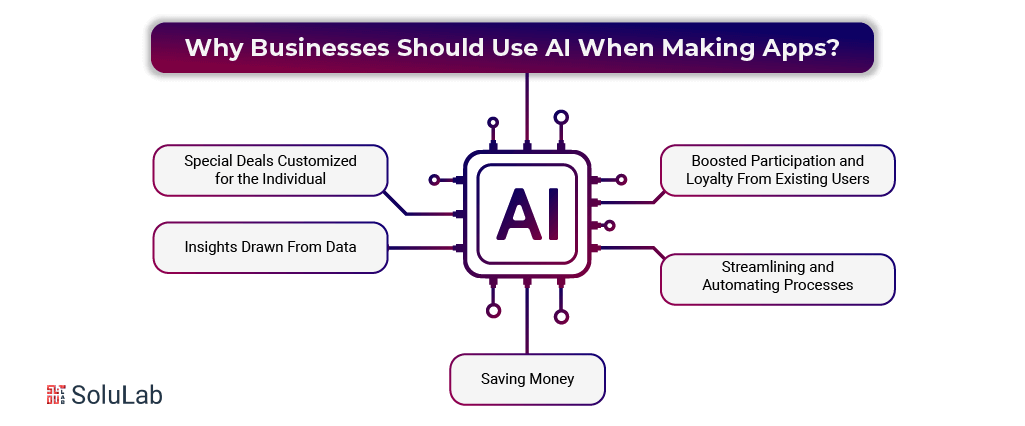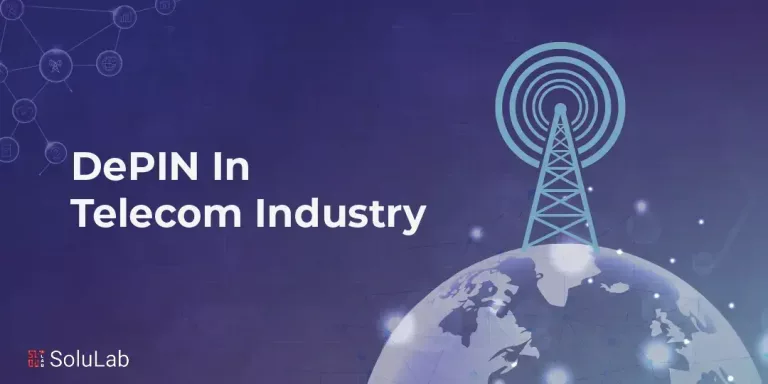
Almost every tech firm these days is racing to be the first to offer AI-powered app development.
Notion, ClickUp, HubSpot, and Salesforce are among the organizations that have introduced AI functionality; however, the vast majority of enterprises are still investigating ways to incorporate AI into their internal and external applications.
A San Francisco-based AI research and deployment firm called OpenAI shifted the global perception of AI and its everyday applications in November 2022. The business debuted ChatGPT. The only way to put it is that the launch was a success. By November 2023, ChatGPT had accelerated from 1 million users in the first week of debut to 100 million users every week. After OpenAI’s revolutionary breakthrough, other companies began investigating ways to incorporate AI into apps in the hopes of replicating its success.
Smarter solutions and more personalized interactions are just two ways in which artificial intelligence (AI) is changing the face of technology interaction. You can make your app more useful, increase user engagement, and add new features by integrating AI. In this blog, we will cover all the necessary processes, tools, and best practices that will help you integrate AI into your app.
What are AI Integrations?
AI integrations are the incorporation of AI capabilities into pre-existing systems, apps, or platforms to improve their performance, usability, and overall functioning. Smarter, more adaptable digital solutions that give real-time insights, automation, and customized experiences may be created by enterprises by integrating AI-powered technologies like computer vision, machine learning, and natural language processing.
Apps built with AI may become smarter and more user-focused by learning from user actions, improving internal processes, and offering data-driven suggestions. For instance, in the healthcare, e-commerce, and finance sectors, AI integration in mobile applications is on the rise. This is because AI-powered features, such as customized recommendations, voice recognition, and predictive analytics, greatly enhance user engagement.
Developers can now easily incorporate AI models into mobile apps for features like chatbot development, picture recognition, recommendation engines, and fraud detection, thanks to improvements in AI frameworks and APIs. Artificial intelligence (AI) integration in mobile applications is changing the way companies engage with consumers. For example, conversational AI may automate customer service, and based on user data, fitness monitoring apps can provide advice. Consequently, businesses that want to be creative and competitive are incorporating AI into their mobile apps.
Reasons Why Businesses Should Use AI When Making Apps?

The 2023 State of AI Report by McKinsey & Company found that generative AI is used by 79% of participants, either in their professional or personal lives, and that 22% of those people use it often at work. Here is a rundown of the main advantages of using AI in software app development for startups, in case those figures don’t persuade you.
-
Special Deals Customized for the Individual
Are you aware that a whopping 91% of shoppers will be more inclined to buy from firms that show appreciation, remember their tastes, and make tailored suggestions? The results of Accenture’s Personalization Pulse Check confirmed this.
With the help of AI, you can now provide your app users with personalized recommendations and offers. Apps become more intuitive and reactive to user actions and preferences when AI customizes user interactions. But it will function if the app can gather and analyze user data.
-
Boosted Participation and Loyalty From Existing Users
In comparison to keeping current clients, acquiring new ones costs five times as much, says HubSpot. The fact that a 25% to 95% increase in revenue may be achieved with only a 5% improvement in customer retention is another strong evidence in favor of prioritizing customer retention.
Additionally, AI personalization is useful in this context. Increased involvement and happiness for customers are the results. The result is an increase in conversion rates and customer retention due to tailored suggestions and promotions.
-
Streamlining and Automating Processes
Naturally, having AI algorithms automate mundane jobs is one of the main benefits: From chatbot-based customer support to content suggestion and text summarization, automation has the potential to improve every aspect of a company’s operations.
Aside from accelerating processes, AI automation lessens the likelihood of human mistakes and allows employees to concentrate on higher-level, more difficult jobs.
-
Insights Drawn From Data
AI use cases and applications are great at sifting through mountains of data in search of patterns and insights that a human eye may miss. These findings have the potential to enhance decision-making, uncover untapped development possibilities, and shape company plans.
The scientific world spent almost half a century trying to figure out how proteins fold, but no one ever really succeeded. Within this framework, DeepMind unveiled AlphaFold, a groundbreaking AI-powered solution that demonstrated AI’s exceptional capacity to unearth intricate insights that outstrip human analytical capacities, in addition to accurately predicting protein structures.
-
Saving Money
The use of AI in product support and maintenance may significantly reduce expenses. As it learns more, it becomes better at maximizing resource use, anticipating when items will break down to save money on repairs, and even improving energy efficiency. Furthermore, AI paves the way for new opportunities, such as accurate picture and speech recognition and real-time language translation, which may ultimately save a great deal of time and money.
This is by no means an all-inclusive list of all the benefits that may be achieved by incorporating AI into applications. On the other hand, these certainly call for further consideration.
Why Should You Think About Using AI in Your App?
Businesses that want to survive in this tech-driven world in 2025 will need to invest in AI integration in mobile apps, as it is now an absolute must. Automated operations, improved efficiency, and scalability are just a few of the benefits that AI-powered apps provide to meet the changing expectations of customers. You can make user interactions more dynamic and engaging by Integrating AI Into an App.
Integrating machine learning into apps is a fundamental part of AI since it enables apps to constantly learn from data trends and user behavior. Improved app features like real-time decision-making, tailored content suggestions, and predictive analytics are the result of this. Take e-commerce applications as an example. They may leverage machine learning to recommend things based on previous purchases. Similarly, fitness apps can personalize training plans depending on user success.
To further improve user happiness and security, adding artificial intelligence to apps also enables capabilities like enhanced fraud detection methods, picture recognition for visual searches, and NLP applications for voice assistants. With the help of AI, companies can streamline processes, automate repetitive jobs, and extract valuable insights from massive datasets, all while enhancing app performance.
As AI frameworks continue to evolve at a quick pace, including AI in your app in 2025 is a proactive move that will guarantee your business stays current, prepared for the future, and able to handle the sophisticated needs of today’s customers.
How to Integrate AI Into Your App?
Here is the breakdown of steps to integrate AI into your app:
-
Establish Your Goals
Clearly defining a goal is essential before incorporating AI within your app. By directing choices about the precise issues or opportunities, AI will solve in your application, this first stage lays the groundwork for every step of the integration process.
Setting goals aids in prioritizing work and directing efforts towards measurable results, whether your objective may lay upon improving analysis for informed decision-making, automating repetitive operations for operational efficiency, or increasing user engagement through customized recommendations. By clearly defining AI goals earlier, you can make sure that the process of integration stays on track and successfully satisfies the requirements and expectations of both stakeholders and your users for services.
-
Select Appropriate AI Platforms and Tools
To successfully include AI into your app, you must use the right AI tech technologies and platforms. You must assess and select solutions that meet your technical needs, financial limitations, and capability requirements based on the particular AI objectives specified in the first stage.
Machine learning models, natural language processing, computer, vision, and other services are provided by well-known AI platforms, which include Amazon Web services, Google Cloud AI, IBM Watson, and Microsoft Azure.
These platforms make it easier to design and implement AI solutions by offering model training, APIs, and reliable frameworks. When choosing AI tools and platforms, take into account elements like support bespoke model, training, ease of interaction with your current, technological stack, regulatory compliance, and continuous support. Making wise decisions now lays the foundation for utilizing AI capabilities to improve the usability of your app.
Gather and Prepare Information
Data is necessary for AI app development and AI algorithms to learn and forecast. Gather relevant information from your application and make sure it is organized, tidy, and labeled. For preparing this data, the following steps are involved:
- Data Rinsing: Involves filling in missing values, fixing mistakes, and removing duplicates.
- Labelling Data: Give data labels to aid the AI model in understanding the situation.
- Transformation of Data: To guarantee consistency, normalize, and standardize data.
1. Select the Appropriate AI Model
The kinds of AI models you require will depend on your goals. Typical models include the following:
- Supervised Learning: Trains the model with labeled data. Algorithm categorization and regression are two examples.
- Unsupervised Learning: Finding patterns from unable data is known as supervised learning. Association, algorithms, and clustering are two examples.
- Reinforcement Learning: Uses input from the model’s activities to train it through trial and error.
AI platforms of pre-trained models, or you can utilize machine learning programs like sci-kit Learn, PyTorch, or TensorFlow to create your own.
2. Model Training and Validation
The AI model is trained by supplying the system data and letting it discover a pattern of this procedure consists of:
- Data Splitting: Separate your data into sets for testing and training.
- Instruction: To educate the model, use the training set.
- Validation: Assess the model’s performance using the testing set.
To improve the model’s accuracy and fine-tuning, repeat this process. TensirBoard is one tool that can be used to diagnose problems and visualize the training process.
3. Integrating AI Model into the App
It’s time to incorporate AI features in mobile applications when it has been trained and verified this step would include:
- Deploying the model with the use of a cloud platform or a server to host a model.
- Integration of API is to make a model available via API which your application can use.
- Notifications of the app for making changes so that it can communicate with the AI model. Process predictions can entail implementing the new user interface components or back and functionality.
4. Keeping an Eye on and Maintaining Model
To maintain their accuracy and efficiency, AI models need constant observation and upkeep. Monitoring the accuracy and performance of the model over time, to keep the model current, adding fresh data regularly and to enhance performance just to novel patterns, retrain the model regularly.
Real-World Examples of AI in Apps
To clarify, let’s look at a few instances of AI integration. Let’s see how business is across a range of sectors. Use AI to achieve significant success.
1. Safety
AI is strong in the field of security. AI is being used by cyber security companies and law information authorities for:
- Recognition of faces
- Monitoring
- Identification of threats
By identifying and eliminating any risks instantly, these tech technologies not only improve public safety but also actively fight cybercrime. AI has also been used by engineers to create an advanced biometric authentication system, such as voice, iris, and fingerprint recognition.
Based on distinct biological characteristics that are difficult to forge, these air-driven solutions provide a better level of protection and traditional techniques, such as access cards or passwords. For example, law enforcement organizations can use visual recognition software from Clearview AI. They can find culprits and investigate crimes more quickly because of it.
2. Retail
AI is already being used by retail businesses for targeting marketing and inventory control. Artificial intelligence is being used to create AI-powered chatbots for customer support and personalized recommendation systems.
Did you have a wish that you could locate a product by taking a picture? The tailors are on it though! Their online stores incorporate visual search tools. Instead of typing lengthy searches to find what you are looking for, you can upload photographs.
These visual search engine engines with AI capabilities can examine your photograph and display comparable goods that are for sale. Consider Amazon, which uses AI and every aspect of its business, from its Alexa-powered customer support to Tailor purchasing recommendations.
3. Transportation
Self-driving trucks and cars are replacing human drivers on the road to reduce human error and increase safety. The purpose of this intelligence system of management is to reduce traffic. This a fuel and time for everyone. And delivery by drone? It’s a quick environmentally friendly, responsible substitute for conventional drop-off, not merely sci-fi fantasy.
AI is also significantly improving public transportation by forecasting passenger demand and streamlining scheduling. Your commute is more efficient and seamless. Waymo is a prime example, as its autonomous cars are at the forefront of self-driving technology. The company wants to improve accessibility to transit and make roadways safer.
Challenges Faced when Integrating AI in Apps
Be prepared to overcome some obstacles when developing an app that uses AI to enhance it, just like you would with every other development of a software project. Here are the most faced challenges while integrating AI into your app:
1. Dependence on Outside Services: Using AI frequently necessitates relying on third-party platforms, like open AI GPT models. The AI features of your app may not work properly. The services have problems.
2. Data Issues: The availability of sufficient, high-quality data is crucial for the success of any AI integration. When hired experts actively annotate data to train the AI model, you will be forced to either obtain more data or indulge in labeling the data if the data is insufficient or low quality. Sensitive information may require extra work to encrypt or anonymize.
3. Cost and Resources: It can take a lot of resources to train a core AI model. To train GPT, for example, open AI spent about $4.6 million. GPT was then modified to produce ChatGPT. It is frequently more practical and economical to use and refine pre-trained models that already exist for particular business requirements rather than creating a model from the ground up.
How Can SoluLab Assist Your Business with AI Integration?
As you see, the idea of incorporating artificial intelligence in your application was first proposed yesterday. It improves decision-making, increases productivity, and provides an excellent customer experience. Additionally, it might as well lead to lower expenses, quick product, development, and improved security. The advantages of integrating AI are enormous, ranging from providing highly specific information to automating monotonous chores.
However, keep in mind that implementing AI successfully requires meticulous preparation and a calculated strategy. High-quality data must be determined, legal and ethical issues must be resolved, and any compatibility problems without systems must be addressed as shameless. The transition depends on managing expenses and assembling a knowledgeable AI team.
At SoluLab, an AI development company, utilizing GenAI and machine learning models, AI-Build, a construction technology business, aimed to improve their tech product development in the computer-aided design (CAD) domain. The intricacy of automating designs in the CAD realm made it extremely difficult to develop a system that could produce intelligent and optimum designs based on predetermined parameters and limits. It was necessary to overcome the challenges of simplifying the process and design smoothly to incorporate AI models to automate repetitive processes and decrease manual intervention.
FAQs
1. How much can it cost to integrate AI into an app?
It is estimated that the total cost of producing an app driven by artificial intelligence might range anywhere from $40,000-$300,000 or even higher. This depends on the features that will be included in the app.
2. Can ChatGPT create an AI?
The ChatGPT API can be used to create an artificial intelligence chatbot, which can then be used to improve your application by indulging in conversational AI capabilities.
3. Can I create a free API?
Eden AI is a platform that brings together some different artificial intelligence application programming interfaces and provides services like processing, images, analyzing text, and more for free.
4. What role does AI play in daily life?
AI is used in many aspects of life and is frequently incorporated into daily routines. The most prevalent ways in which you engage with AI daily, are AI assistants, recommendations, engines, spam, fitters, and e-commerce platforms.
5. How to add AI to an app?
Established defined goals and selected appropriate AI tools before integrating AI into an application. After obtaining and preparing data, choose the appropriate model. Before incorporating it into the app, train and validate. Lastly, keep an eye on and maintain the performance at all times.






